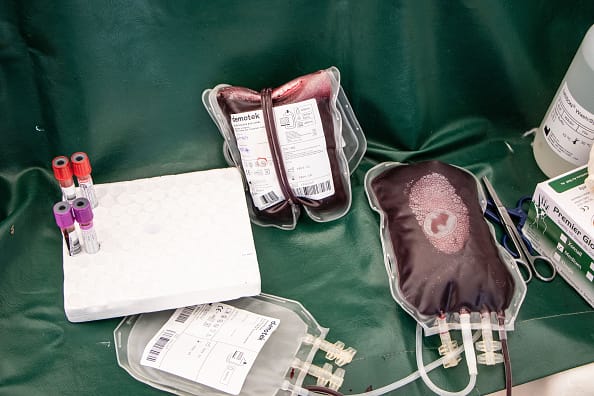Hemolytic disease of the fetus and newborn (HDFN) caused by ABO incompatibility between the mother and her baby is more common and often causes less severe symptoms than HDFN caused by incompatibility of the Rh blood group.
ABO incompatibility in HDFN can also decrease the risk of sensitization to other red blood cell antibodies, including anti-D, anti-c or anti-Kell.
What is HDFN?
Hemolytic disease of the fetus and newborn (HDFN) is an immune-mediated red blood cell disorder that occurs when a baby’s RBCs break down quickly, which is called hemolysis. HDFN is caused by a mismatch between a mother’s and her baby’s blood type (A, B, AB, or O) or Rhesus (Rh) factor (Rh-positive or Rh-negative) during pregnancy.
What is ABO incompatibility in HDFN?
ABO incompatibility occurs when a mother has the 0 blood type and her baby’s blood type is A or B. This can lead to HDFN, where the mother’s immune system develops antibodies that cross the placenta and attack the fetus’s red blood cells, progressively breaking them down.
While ABO incompatibility occurs in about 15% to 20% of pregnancies, only about 1% of these pregnancies develop HDFN. It doesn’t generally lead to problems during pregnancy, and following delivery symptoms can range from mild to moderate.
In ABO incompatibility, the newborn usually experiences jaundice and in some cases, anemia. Symptoms are often successfully treated with phototherapy, and only in rare cases does it lead to severe symptoms that require treatment by blood transfusions, exchange transfusions or intravenous immunoglobulin.
Learn more about HDFN causes and risk factors
Protective effect of ABO incompatibility
Cases of ABO incompatibility-related HDFN have the protective effect of helping to prevent maternal sensitization to the RhD antigen, as well as anti-c and anti-Kell. This is due to maternal anti-A or anti-B antibodies attacking the fetal red blood cells early in pregnancy, before other red cell antigens can be detected. Fetal red blood cells that come into contact with maternal blood cells are quickly destroyed, which reduces the risk of maternal sensitization to the D, c and Kell antigens.
Managing ABO incompatible pregnancies
The possible incompatibility of blood types between mother and baby can be predicted with ABO blood typing during prenatal testing. If ABO incompatibility is flagged as a potential risk during pregnancy, regular monitoring will be essential to ensure early intervention and adequate prenatal care management if the fetus develops HDFN and demonstrates symptoms of anemia.
Following delivery, the newborn may also require close monitoring and follow-up care to manage signs of jaundice or anemia proactively. Outcomes in ABO incompatible pregnancies are usually positive, but complications can occur in some cases.
Sign up here to get the latest news, perspectives, and information about HDFN sent directly to your inbox. Registration is free and only takes a minute

